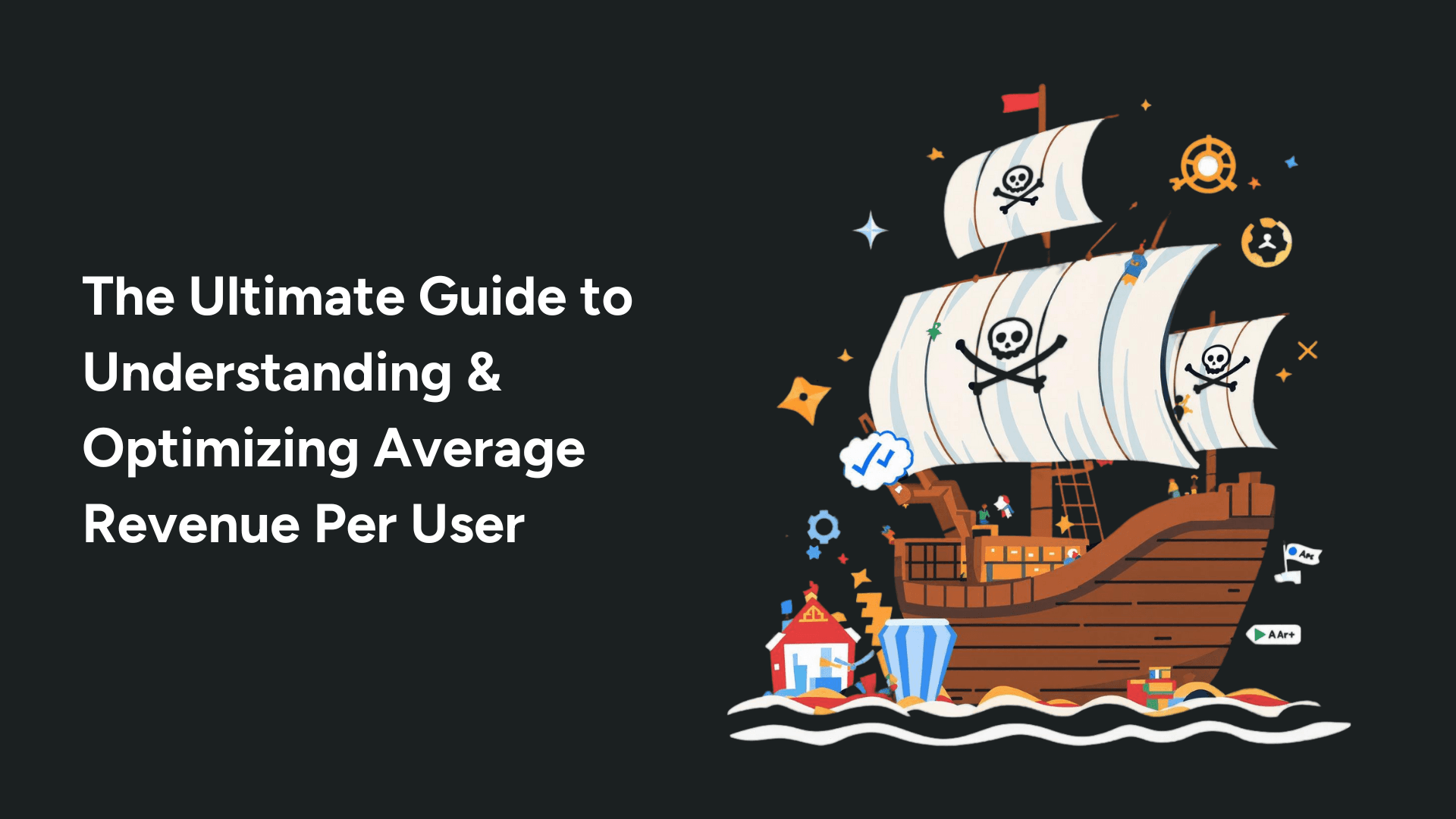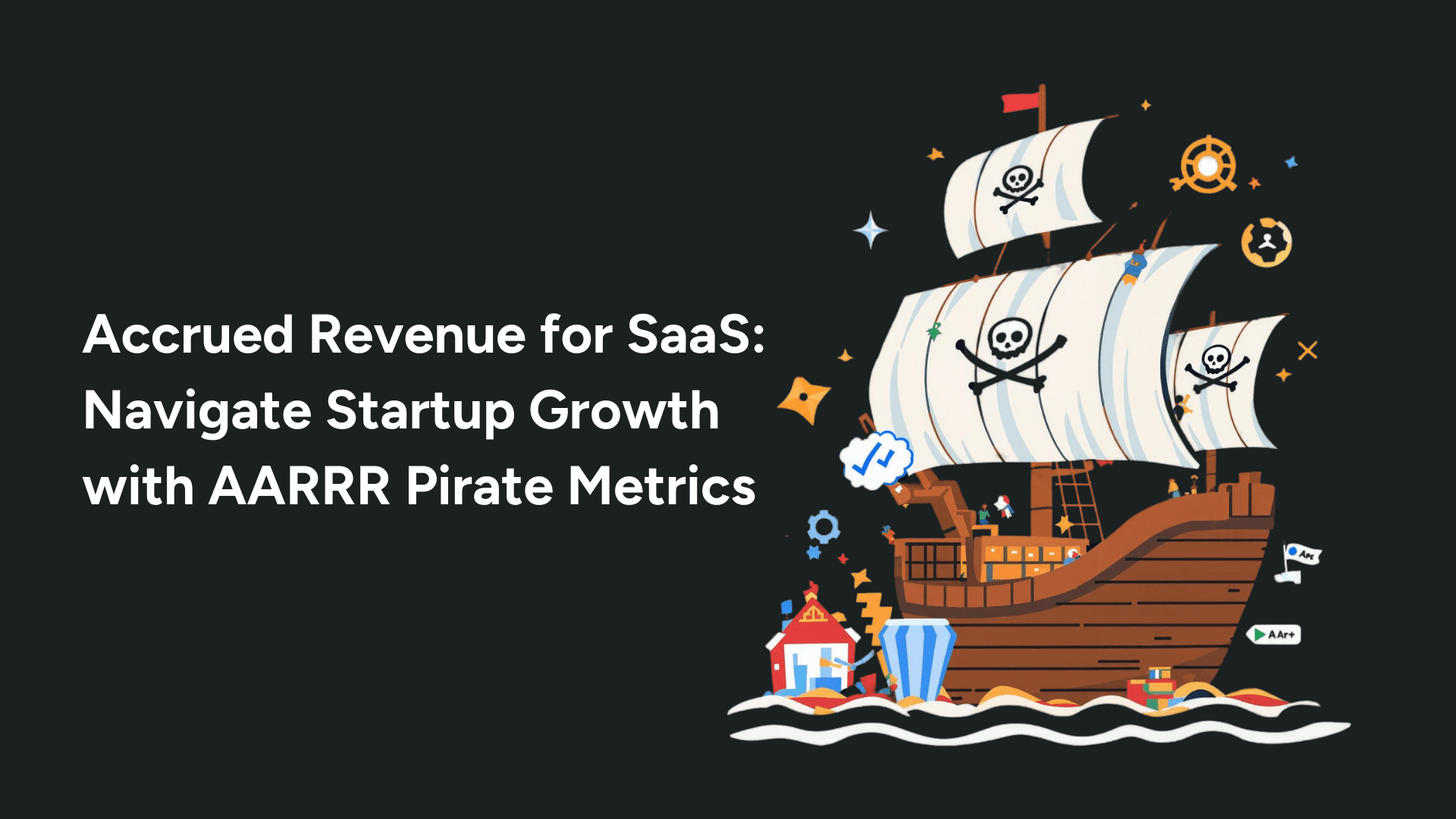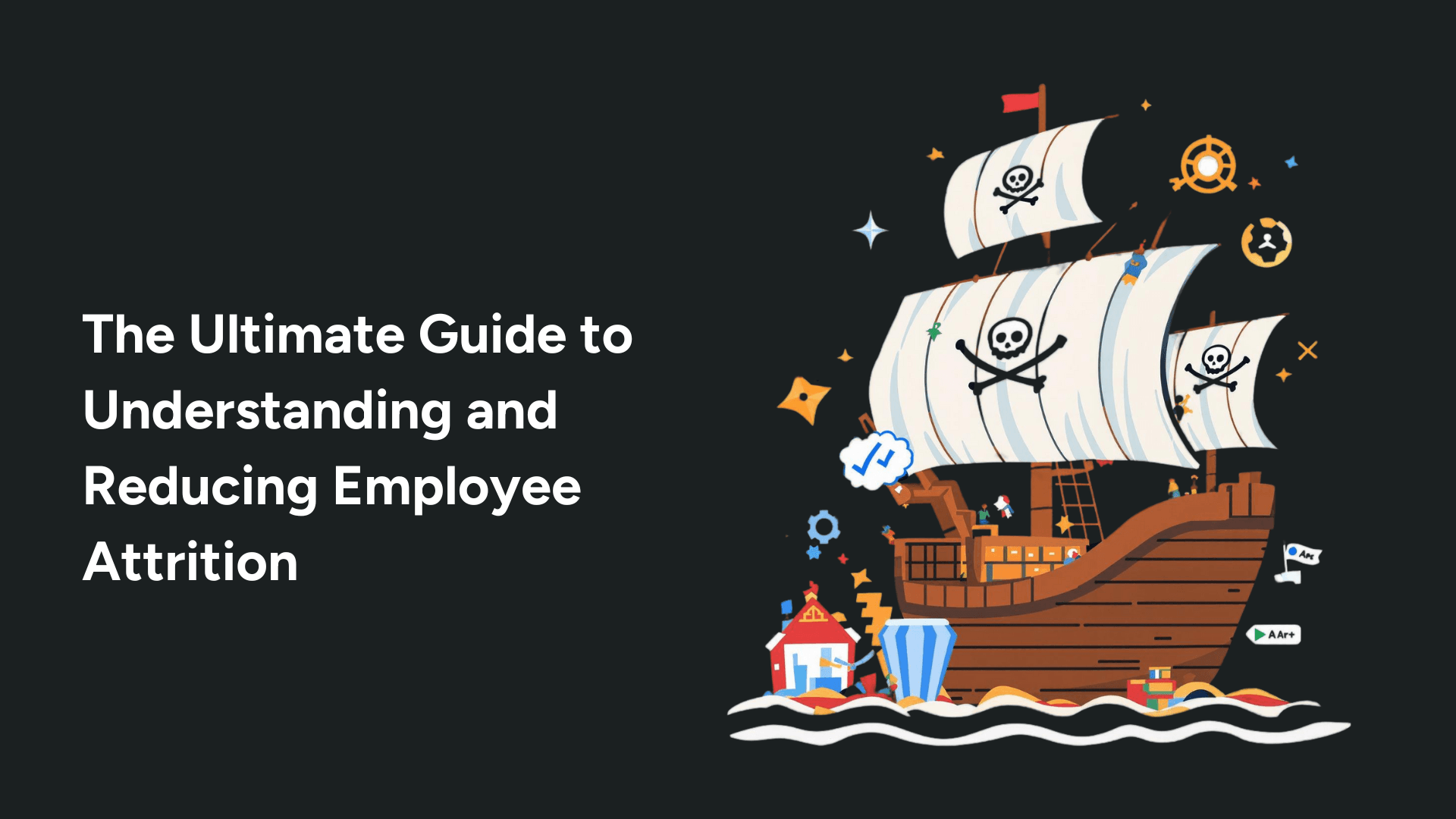Nov 23, 2024
The Ultimate Guide for Average Revenue Per User

Can Aslan
This comprehensive guide explores Average Revenue Per User (ARPU), a critical metric for SaaS business growth. We examine how to calculate and optimize ARPU through strategic pricing, customer segmentation, and retention tactics. Featuring real-world case studies and actionable strategies, this guide helps SaaS leaders transform their revenue growth trajectory.
In the fast-paced world of SaaS, where recurring revenue is king, understanding your Average Revenue Per User (ARPU) isn't just another metric—it's your compass for sustainable growth. While many businesses obsess over user acquisition, they often overlook the goldmine of opportunities hiding within their ARPU numbers. This oversight can lead to stagnant growth and millions in unrealized revenue potential.
Whether you're a founder, CEO, or growth marketer, this guide will equip you with the knowledge and practical tools to not only understand your ARPU but to optimize it for maximum impact. By the end, you'll have a clear roadmap for transforming this crucial metric into a powerful driver of business growth.
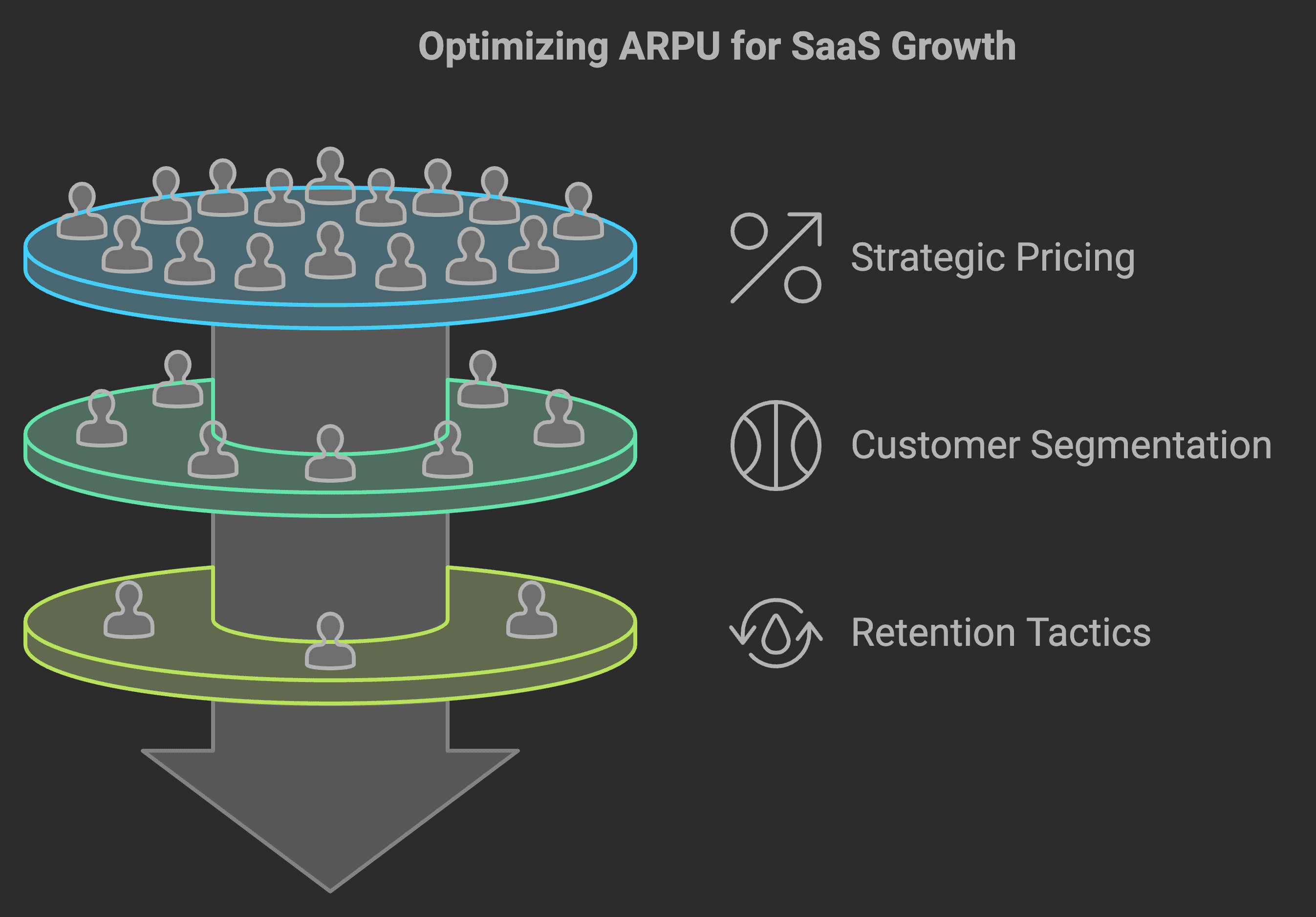
Demystifying ARPU: What It Is and Why It Matters
At its core, Average Revenue Per User (ARPU) represents the typical revenue generated by each customer of your SaaS product. But don't let this simple definition fool you—ARPU is a nuanced metric that can be calculated and analyzed in multiple ways:
Monthly ARPU = Monthly Recurring Revenue (MRR) / Total Number of Active Customers
Annual ARPU = Annual Recurring Revenue (ARR) / Total Number of Active Customers
Segmented ARPU = Segment Revenue / Number of Customers in Segment
Industry Snapshot: ARPU varies dramatically across the SaaS landscape. B2B companies like Salesforce boast ARPUs exceeding $1,000, while B2C platforms like Spotify typically see figures under $10. This variation isn't just about market positioning—it reflects fundamental differences in value delivery and customer engagement.
💡 Action Item: Calculate your current ARPU across different customer segments. This baseline understanding is crucial for identifying growth opportunities.
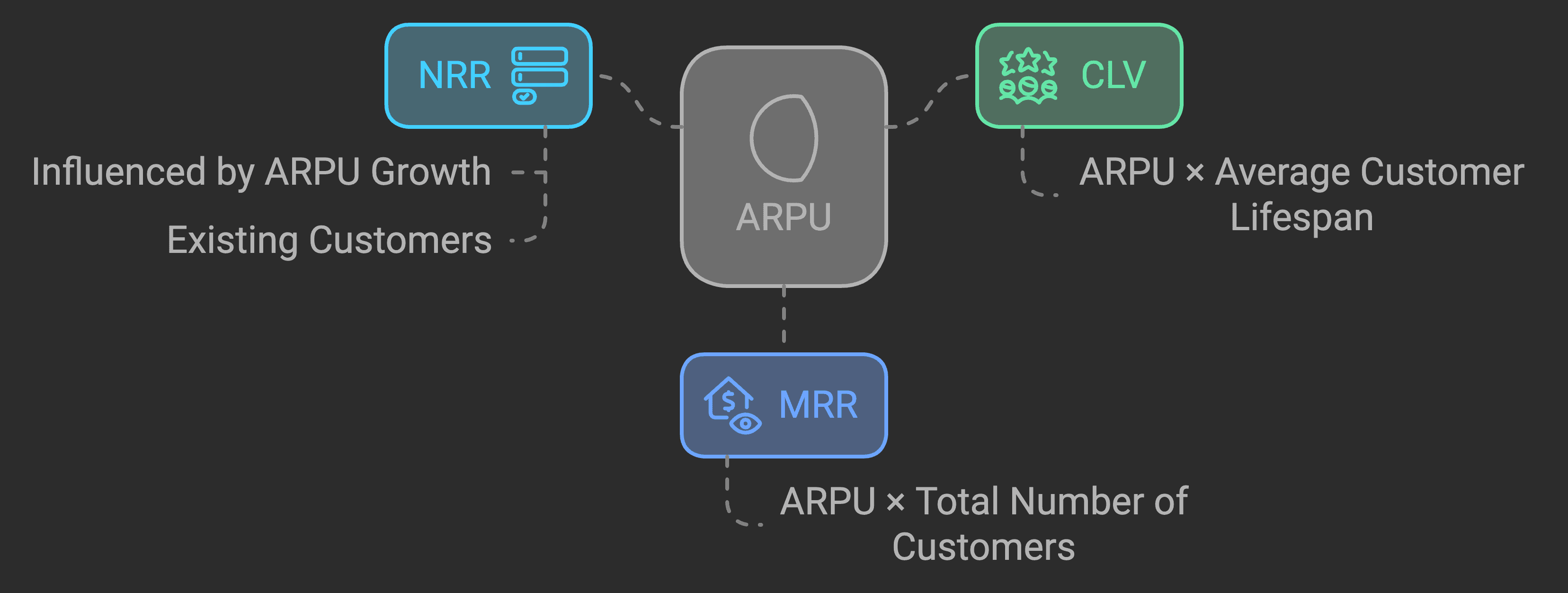
The Power of ARPU: Unlocking Growth Opportunities
ARPU isn't just a standalone metric—it's deeply interconnected with other crucial SaaS metrics. Recent studies by OpenView Partners reveal that companies with an ARPU above $250 experience 40% less churn than those below $50. This correlation highlights a fundamental truth: customers who pay more often derive more value and stick around longer.
Key relationships to understand:
Customer Lifetime Value (CLV) = ARPU × Average Customer Lifespan
Monthly Recurring Revenue (MRR) = ARPU × Total Number of Customers
Net Revenue Retention (NRR) = Heavily influenced by ARPU growth from existing customers
Pricing for Success: Optimizing Your Pricing Strategy
Value-based pricing has emerged as the holy grail of SaaS pricing strategies. Take Intercom's journey: by shifting from a user-based to a conversation-based pricing model, they increased their ARPU by 32% in just six months.
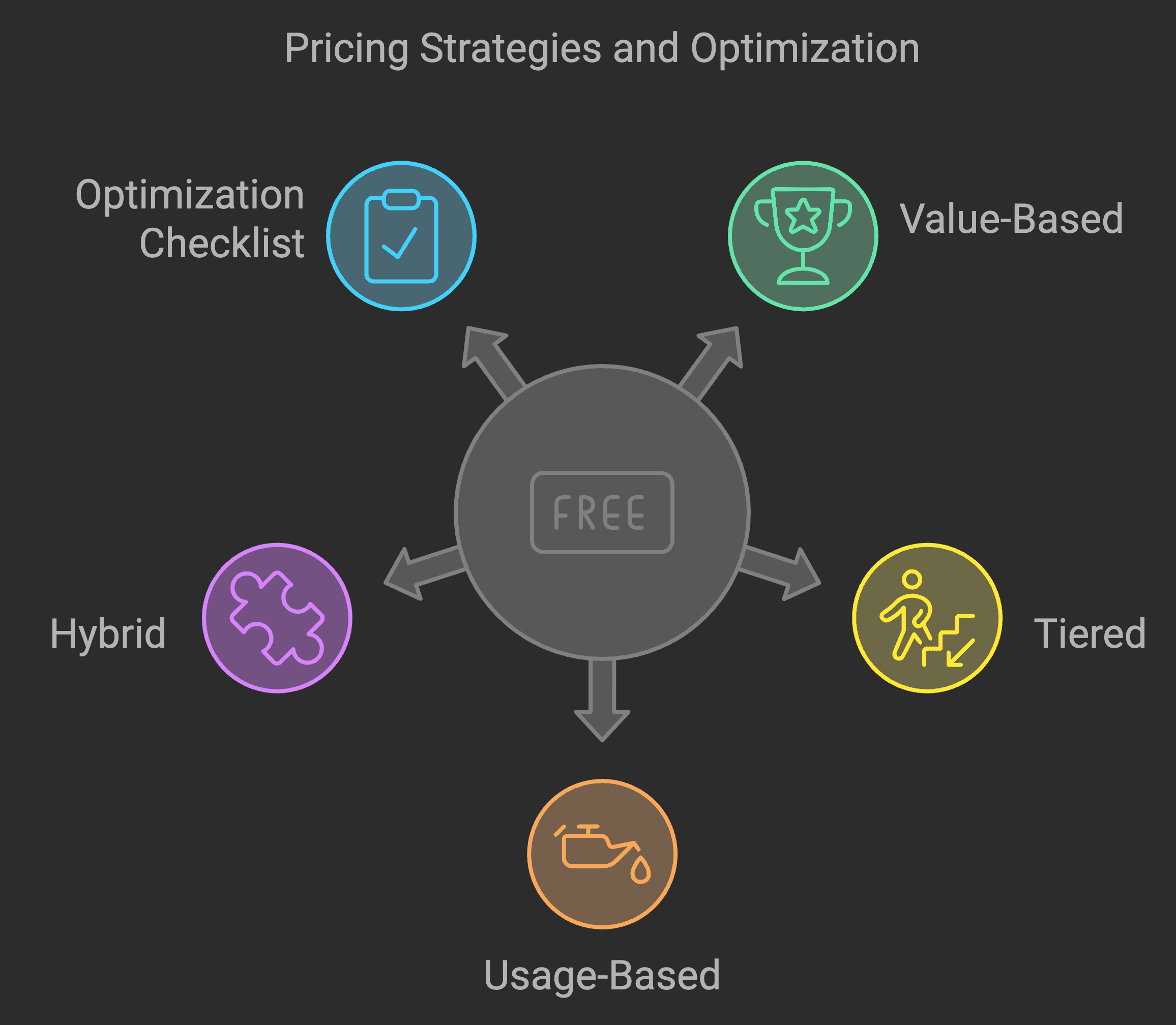
Key Pricing Models:
Value-based: Price based on the measurable value your product delivers
Tiered: Multiple feature packages at different price points
Usage-based: Pricing scales with actual product usage
Hybrid: Combination of different models
Pricing Optimization Checklist:
Analyze customer usage patterns
Map features to customer value
Test price sensitivity
Monitor competitive positioning
Regular review and adjustment
Beyond Pricing: Effective Strategies to Boost ARPU
While pricing optimization is crucial, sustainable ARPU growth requires a multi-faceted approach. ProfitWell's research shows that companies implementing personalized expansion revenue strategies see a 25% higher ARPU growth rate.
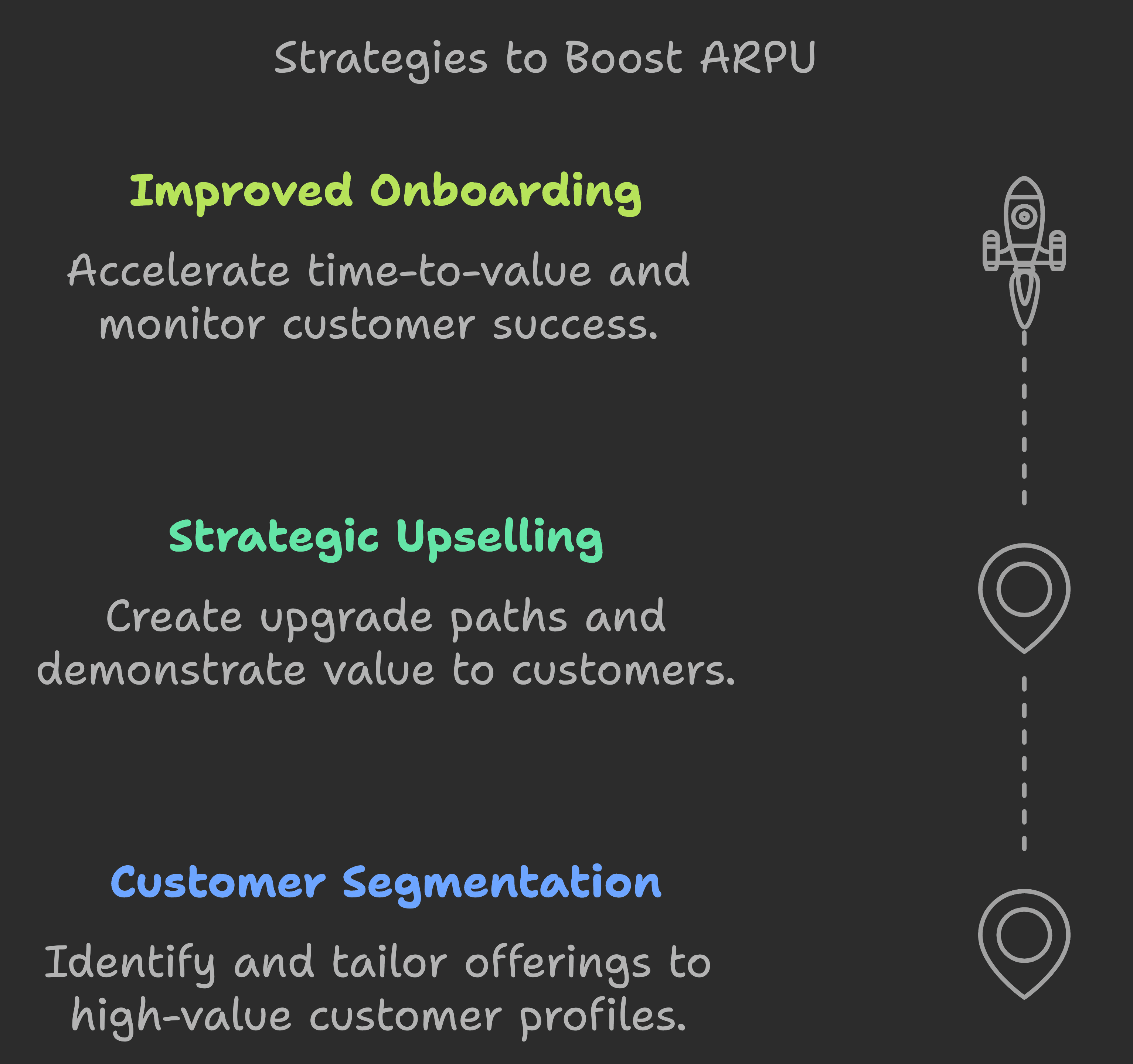
Proven ARPU Growth Strategies:
Customer Segmentation
Identify high-value customer profiles
Tailor offerings to segment needs
Focus acquisition on profitable segments
Strategic Upselling
Create clear upgrade paths
Time expansion offers strategically
Focus on value demonstration
Improved Onboarding
Accelerate time-to-value
Build habit-forming features
Proactive success monitoring
Case Study: Zoom's enterprise focus led to a 43% ARPU increase in 2020 through strategic customer segmentation and targeted enterprise features.
Measuring Success: Tracking & Analyzing ARPU
Effective ARPU optimization requires robust tracking and analysis. Top SaaS companies typically monitor:
Segmented ARPU: By customer type, industry, or plan
ARPPU (Average Revenue Per Paying User): Excluding free users
ARPU Growth Rate: Month-over-month and year-over-year trends
Popular Tracking Tools:
ChartMogul
ProfitWell
Baremetrics
Paddle Analytics
Conclusion
ARPU optimization is not a one-time effort but a continuous journey of refinement and improvement. Start by implementing one strategy from this guide—whether it's segmenting your customer base or optimizing your pricing tiers—and closely track the results.
Remember: even a modest 10% increase in ARPU can dramatically impact your bottom line and set the stage for sustainable growth.
